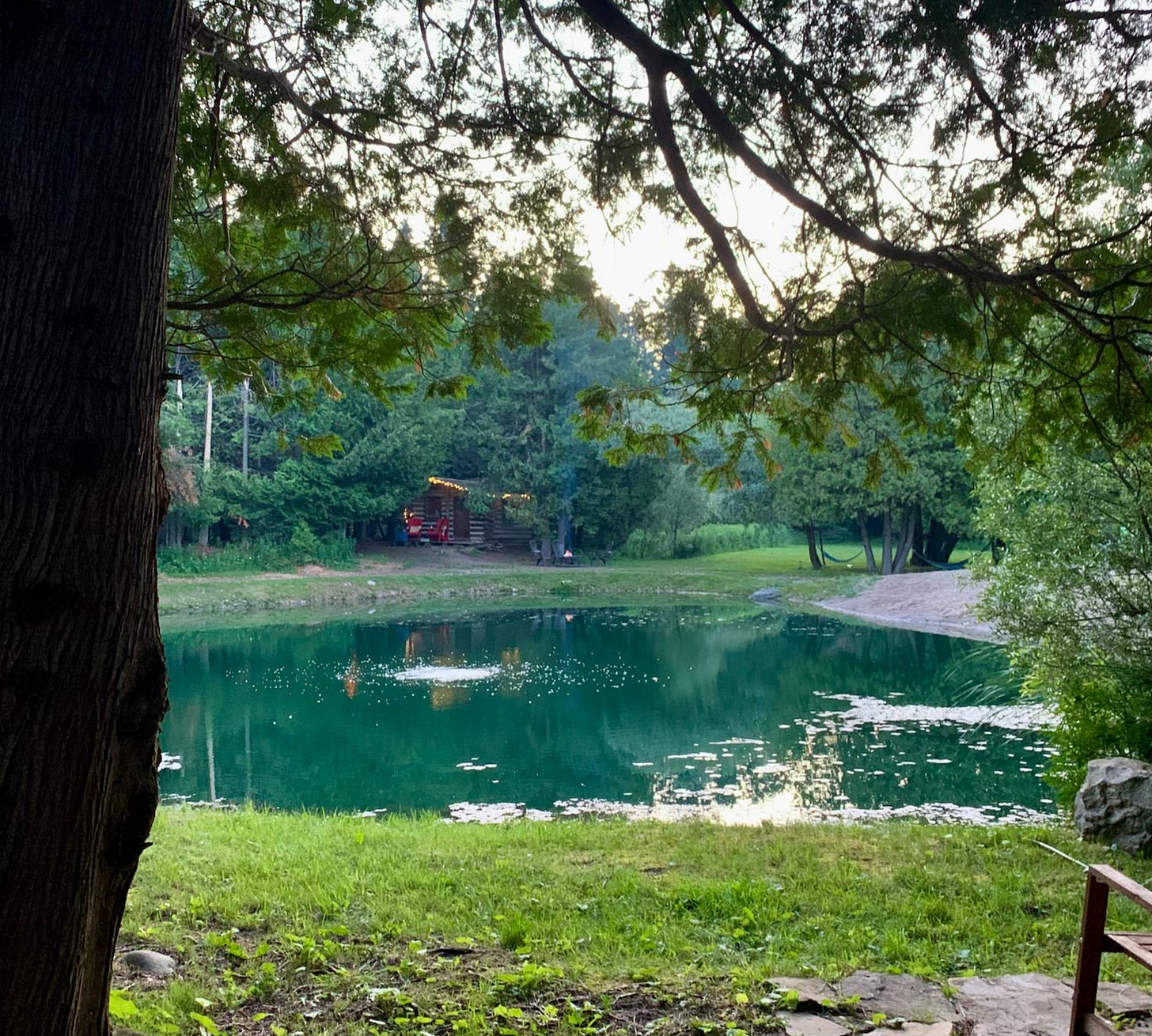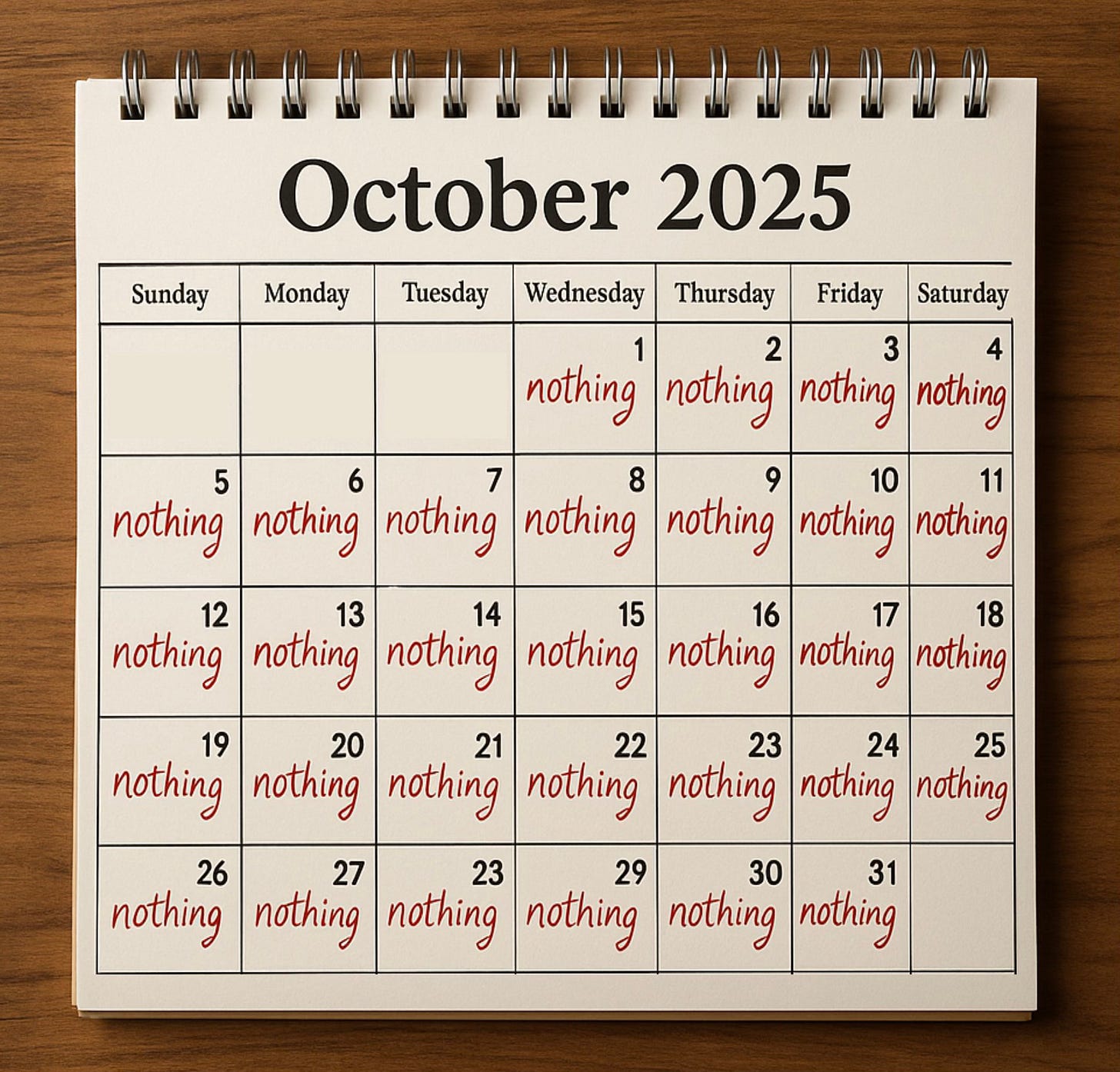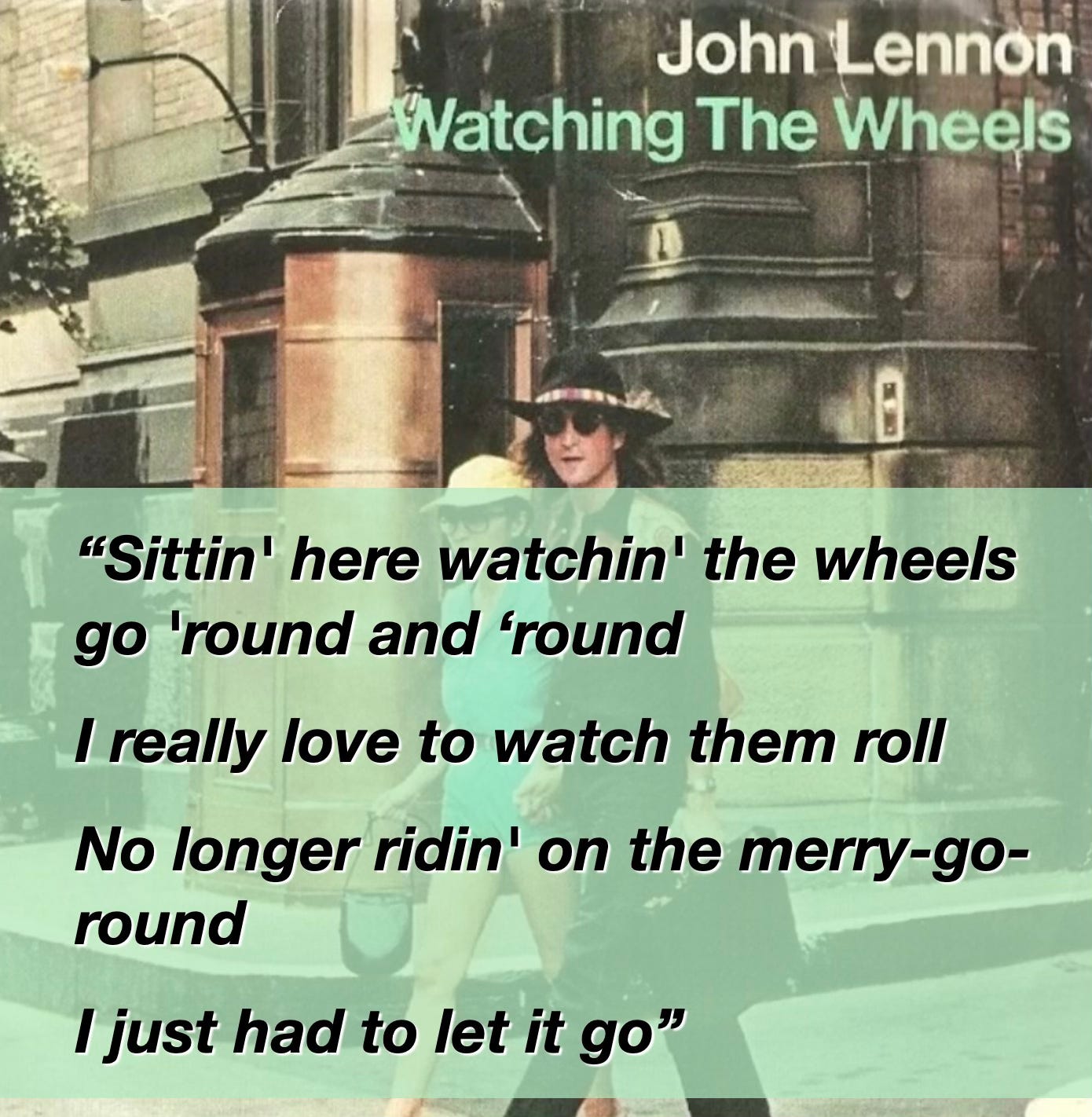The Work of Doing Nothing
What portfolio construction teaches us about finding peace
I'm sitting on the front porch of a rustic cottage, looking out on a still pond on this beautiful early autumn evening. I couldn't ask for more ideal circumstances to just sit and be—to do nothing at all.
Yet my mind is unsettled. I'm preoccupied with mosquitoes, the week ahead, whether to have another drink. It strikes me how difficult it is to simply do nothing. Our minds are restless, constantly prodded into action by FOMO, feelings of inadequacy, and compulsions to always be productive.
The Restless Portfolio
These same devils that torture us on quiet porches also plague our investing lives. We have a strong tendency toward action when inaction is often what a situation demands.
During market volatility, we feel compelled to do something—anything—rather than sit with uncertainty.
But there's more to doing nothing than just resisting the urge to act.
We need to set the stage for doing nothing, both in life and in our portfolios.
In investing, this means constructing a portfolio that will work under all circumstances without requiring constant intervention. If your entire portfolio consists of NVIDIA shares or complex derivatives, you can't afford to do nothing—you'll be forced into reactive trading, constantly monitoring and adjusting.
But when you're broadly diversified across asset classes and properly allocated to meet your long-term goals, you can comfortably do nothing beyond regular contributions and periodic rebalancing. The portfolio itself becomes a vehicle for peace of mind, designed specifically to free you from the need to constantly monitor markets and second-guess decisions.
Consider the parallel: just as a well-constructed portfolio lets you sleep through market storms, preparing our minds for stillness helps us navigate life's chaos with greater equanimity.
The challenge of stillness
How does this portfolio wisdom help me here on this porch, trying to wrangle my brain into feeling okay with doing nothing?
In my younger days, before jobs, mortgages, and family responsibilities, I could easily unwind on Friday nights with all my work done for the week. There was genuinely nothing urgent to do, so I could lose myself in TV or read for hours on end.
But that wasn't really doing nothing—that was distracting myself from doing nothing. I used entertainment as a buffer against the discomfort of pure stillness, much like how we now use our phones, our anxieties, our endless mental to-do lists.
The difference now is that there's never truly nothing to do. At any given moment, I can think of ten things I've been avoiding or should be tackling. Simply pretending these don't exist feels like torture and is definitely still doing something.
The Buddha's answer
The Buddha's solution was radical: aimlessness.
The basic idea is that peace and contentment lie within us and are not found in external achievements or circumstances.
This concept gets an unfair reputation, often conflated with laziness or lack of ambition. But aimlessness is neither of those things. A person can embody aimlessness while still accomplishing great things. The Buddha himself, maybe history’s most aimless person, launched a religion/philosophy that has endured for over two millennia and continues to reduce suffering worldwide.
The key difference is motivation. With aimlessness, we can set out to accomplish great things, but we don't depend on the outcomes of our actions for our sense of peace or self-worth. We don't have to earn contentment through productivity (despite what Western culture has been drilling into our heads).
Swimming against the current
How do we learn to live more aimlessly? How can we swim against this relentless current of constant doing?
One approach mirrors our portfolio strategy: we can deliberately create space for aimlessness. Just as we construct portfolios that allow us to sit back during market turmoil, we can structure our lives to include guilt-free periods of non-doing. This might mean blocking out time with no agenda, creating physical spaces designed for rest, or simply practicing the radical act of sitting still without immediately reaching for our phones.
Another way, as Oliver Burkeman explores in "Four Thousand Weeks," is to embrace our finitude. We'll never complete our infinite mental to-do lists, so we might as well lay down our swords occasionally.
The Practice
As I sit here with the evening light fading, contemplating these ideas isn't exactly doing nothing—it's work toward the goal of doing nothing. Sometimes the path to stillness requires effort, just as building a low-maintenance portfolio requires initial design.
The art lies in recognizing when we're genuinely resting versus just distracting ourselves. True aimlessness is about finding the courage to be present without immediately needing to do something.
Perhaps that's enough “doing something” for now. Time to let my mind drift and be as still as the pond in the golden evening light.
- The Buddh-ish Investor
I’d love to hear from you! Email at Sangha@TheBuddhishInvestor.com or drop a comment below!
Take home points:
Build systems that let you do nothing: Smart investors construct portfolios that don't need constant tinkering—apply the same principle to your life.
Stop earning your peace: Contentment isn't a reward for productivity—it's your natural state that culture has trained you to forget.
If you’re looking for more:
Watching the Wheels: John Lennon’s divine ode to doing nothing:





This article comes at the perfect time! Our minds truely need a system reboot from constant demands.